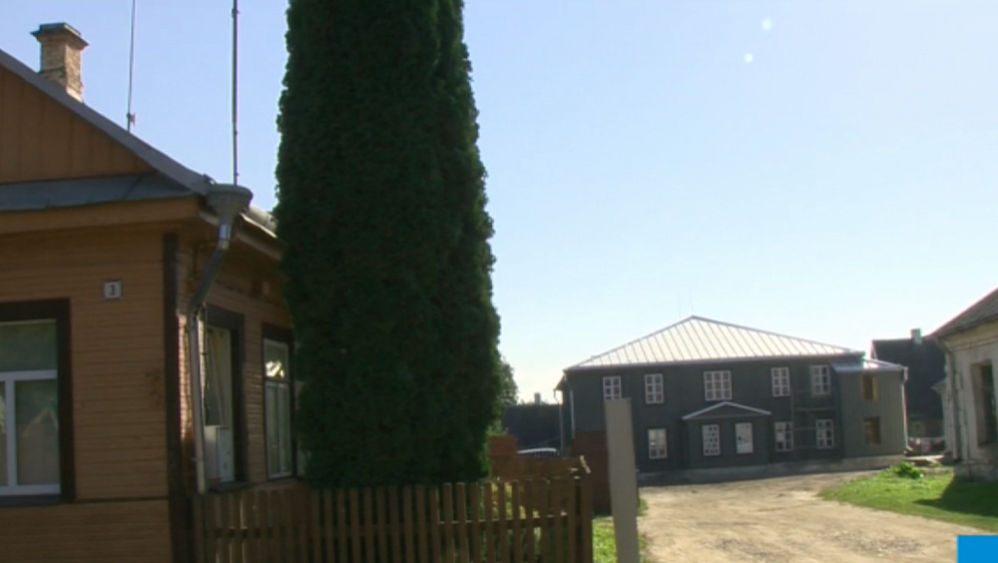
LRT TV News Service LRT.lt
When Lithuania joined the European Route of Jewish Cultural Heritage, the synagogue in Žiežmariai was chosen as the symbolic first site. The wooden house of prayer is a rare surviving example of wooden synagogues in Europe. Even so, it took more than a decade for reconstruction to begin. After work is done, the plan is for the small building located in a town along Lithuania’s main highway to host a museum.
About 500 Jews lived in Žiežmariai when the synagogue was built in the 19th century. Before the war there were up to a thousand. Now the synagogue is getting back its former face, with work on the façade, windows, walls and the already-finished roof.
Restoration experts working on the building say the synagogue succeeded in surviving because of daily care by local residents. They boarded up windows and removed garbage dating back to Soviet times, when the building was used as storage. Neighbor Liudvikas Markuntavičius said the synagogue serves more than just to remind the small town of a glorious past. During World War II the synagogue territory was used as a ghetto and the Jews of Žasliai and Kaišiadorys were imprisoned there.
“In one place here 1,800 women and children were murdered, in the forest, and in another 2,200 men,” Markuntavičius said.
Inscriptions were discovered on the walls from the time of the ghetto and will be preserved.
The plan is for the restored synagogue to house a museum telling the town’s history and also showcasing wooden synagogues, which were once built and graced the entire extent of the Grand Duchy of Lithuania. Only a few dozen synagogues still stand in the world and most of them are in Lithuania.
“The Jewish community lived here for almost 500 years, until the Holocaust, and formerly constituted more than half, almost two-thirds, of the population, so I think it really would be of interest to residents to learn about the building, but also about the people who built this building and who used to go there to pray,” Kaišiadorys regional administration head Vytenis Tomkus said.
Full text with video in Lithuanian here.

